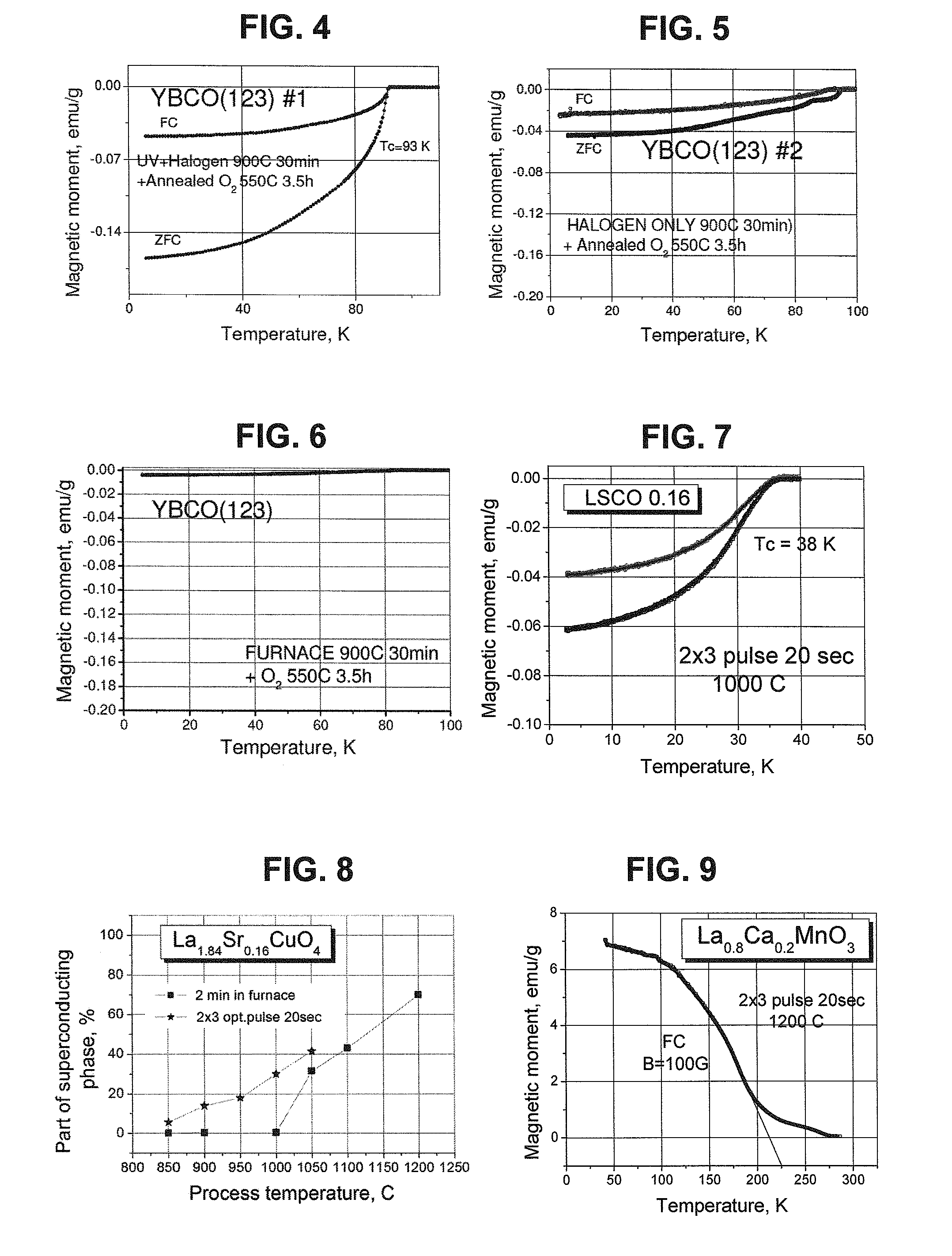Rapid Solid-State Reaction of Oxides with Ultraviolet Radiation
a solid-state reaction and ultraviolet radiation technology, applied in the direction of oxide conductors, non-metal conductors, superconductor devices, etc., can solve the problems of high production cost, high production cost, and high cost of high-quality ceramic materials, so as to improve the synthesis of ceramic materials, reduce production time, and increase process efficiency
- Summary
- Abstract
- Description
- Claims
- Application Information
AI Technical Summary
Benefits of technology
Problems solved by technology
Method used
Image
Examples
example
Synthesis of a High-Temperature Superconductor YBa2Cu3O7-x
[0067]La2O3, BaCO3, and CuO powders of at least 99.99% purity are thoroughly mixed in stoichiometric proportions in an agate mortar to produce a powder mixture. Hereinafter, the powder mixture is pressed with a 5 ton press into pellets with a diameter of about 12 mm and a thickness of about 0.4 mm to 1 mm. These pellets or samples are then irradiated at different conditions by means of the above described setup.
[0068]Sample #1 was irradiated by both ultraviolet and halogen lamps at 900 degrees Celsius for about 30 minutes. Sample #2 was irradiated only by the halogen lamps at 900 degrees Celsius for about 30 minutes. The control sample #3 was inserted into a conventional furnace, preliminarily heated to about 900 degrees Celsius and removed therefrom after 30 minutes. All the reactions with samples #1, #2, and #3 were performed in air.
[0069]Black color ceramic samples with a low-ohm resistance were obtained by this synthesis...
PUM
| Property | Measurement | Unit |
|---|---|---|
| Temperature | aaaaa | aaaaa |
| Temperature | aaaaa | aaaaa |
| Temperature | aaaaa | aaaaa |
Abstract
Description
Claims
Application Information
 Login to View More
Login to View More - R&D
- Intellectual Property
- Life Sciences
- Materials
- Tech Scout
- Unparalleled Data Quality
- Higher Quality Content
- 60% Fewer Hallucinations
Browse by: Latest US Patents, China's latest patents, Technical Efficacy Thesaurus, Application Domain, Technology Topic, Popular Technical Reports.
© 2025 PatSnap. All rights reserved.Legal|Privacy policy|Modern Slavery Act Transparency Statement|Sitemap|About US| Contact US: help@patsnap.com



